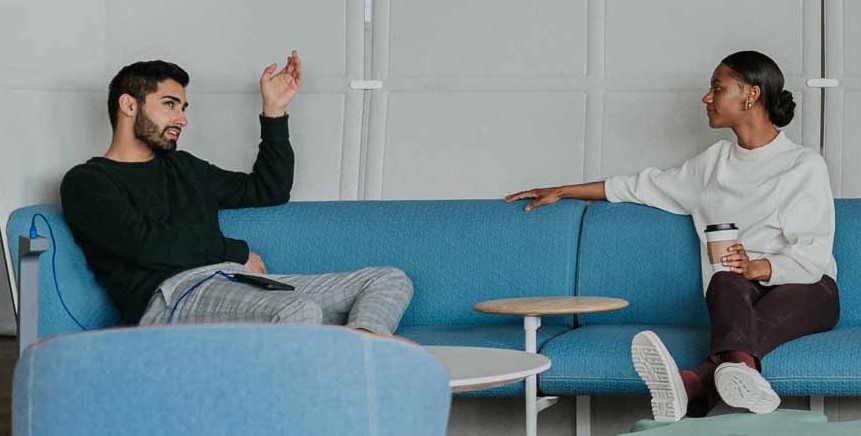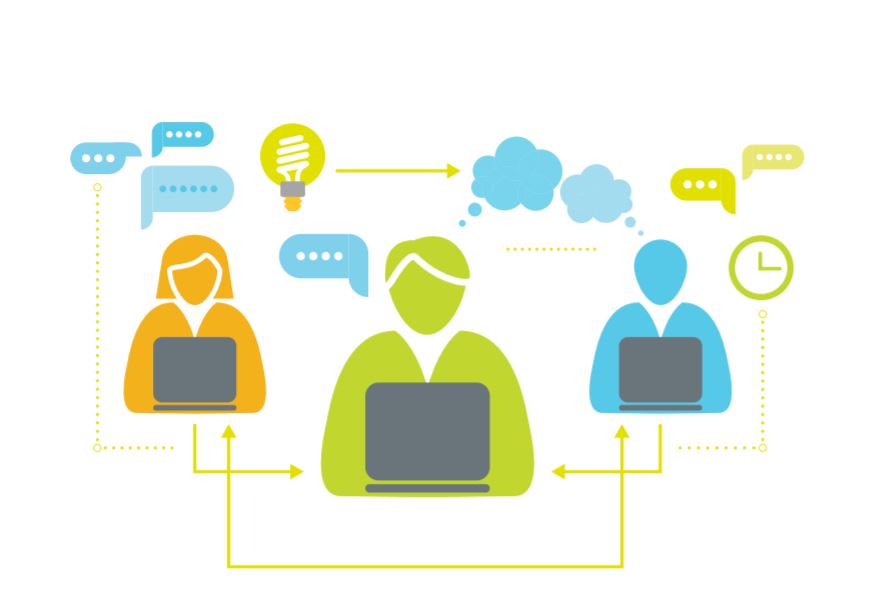Haworth – Part 2 of How Equitable Businesses Succeed
Intentionally or not, workspace design speaks a language that conveys information about culture, norms, and commitment to well-being. People who understand the language can use and make their way around the space without much difficulty or stress. They are readily able to locate other people and the resources they need to work effectively. We call this the “legibility” of the workspace.
Legible design includes a floorplan that can be easily navigated and understood by all, with visual access throughout the space and to the outside, landmarks that help people orient themselves, and individual and group spaces that communicate their intended use through inclusive design.
Illegible space sends a subtle message that says, “You can use this space, but it really isn’t for you.” Illegible space can lead to a situation of “haves vs. have-nots” in terms of access to “soft” resources that the office provides, such as relationships, social capital, and influence. The space can unintentionally reduce inclusion and equity for some groups. It can also lead to potentially damaging higher stress levels for some groups.
Inclusivity consultant and behavioral scientist Dr. Pragya Agarwal states in an article for Forbes, “Inclusive design is all about putting users at the heart of the design process, and it is about usability and efficiency. Reducing effort and segregation creates a happier workplace.” She goes on to say that while designing the perfect space for everyone is impossible, it’s important to consider as many needs as possible. A collaborative design process that brings employees in as consultants is one of the best ways to do this. Solicit their input from the very start, have them try out the spaces, and carry out an evaluation based on feedback and observation.
“The workplace is a venue for social impact, and it’s important to have spaces that are legible to all for psychological safety. We need to be inclusive of diverse individuals by creating spaces together,” says Haworth’s Director of Talent Attraction & Development Sharon Netto-Lipsky.
“Neurodiverse individuals are our largest population,” Sharon states, citing a World Economic Forum article, which mentions that 1 in 7 people are neurodivergent or neurodiverse. “It’s important to design spaces to accommodate their needs.”
According to a Work Design Magazine article about designing for neurodiversity and inclusion, neurodivergent individuals may have sensitivity to lights, sounds, and smells, in addition to differences in the ways they interact with others. Designing a variety of spaces that take into account the effects of these sensitivities, and even color choices can make a big difference.
A legible space has a common language of intention that offers equity in access to resources, a sense of personal comfort, and shared understanding for all people—those with visible and invisible differences—and especially now, for people with a heightened awareness and sensitivity to their surroundings, who are returning to the workplace amid the COVID-19 crisis. Using universal, or inclusive design concepts can help everyone contribute fully and thrive. Some of these include:
Providing choice in spaces and tools
Eliminating unnecessary complexity and manipulation of items in the workspace
Arranging tools, reference materials, and information based on importance
Using pictorial, verbal, or tactile presentation of essential information
Providing a variety of techniques or devices used by people with sensory limitations
Arranging elements to eliminate physical hazards and barriers
Providing warnings of potential hazards and failsafe features
Ensuring tools can be used efficiently and comfortably with minimum repetitive actions and physical effort
Providing a clear line of sight to important elements and keeping tools within reach of any seated or standing user
Providing adequate space for assistive devices or personal assistance
Fostering Culture for Remote Workers
Since the COVID-19 crisis began, the remote work experience has been under close scrutiny. With more people working from home than ever before, this time has given us an opportunity to reevaluate inclusion and cultural norms for remote workers, as well.
As in the office, remote workers all have different life experiences. It’s important to maintain the same sense of cultural inclusiveness and personal worth people would get from an office environment. Some things that can help people feel like they belong while working remotely include:
• Ensuring everyone has the technology they need to collaborate and keep in touch
• Subsidizing home office furniture
• Setting norms among colleagues to have regularly occurring virtual touch-base meetings or check-ins
• Scheduling time for casual conversation and catching up
Read more HERE.






